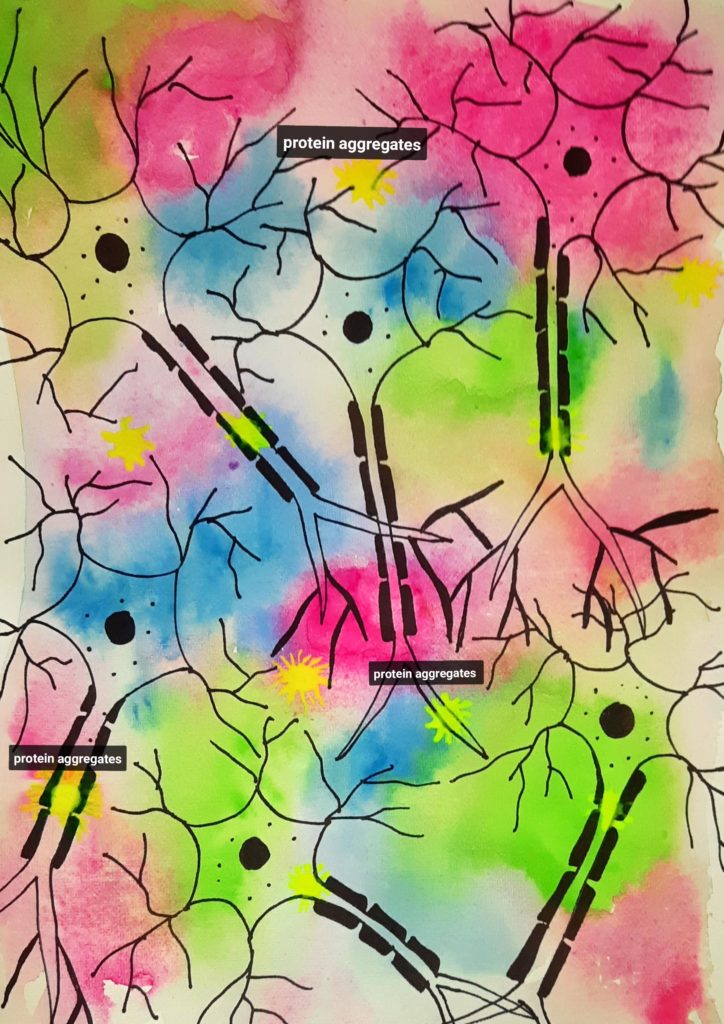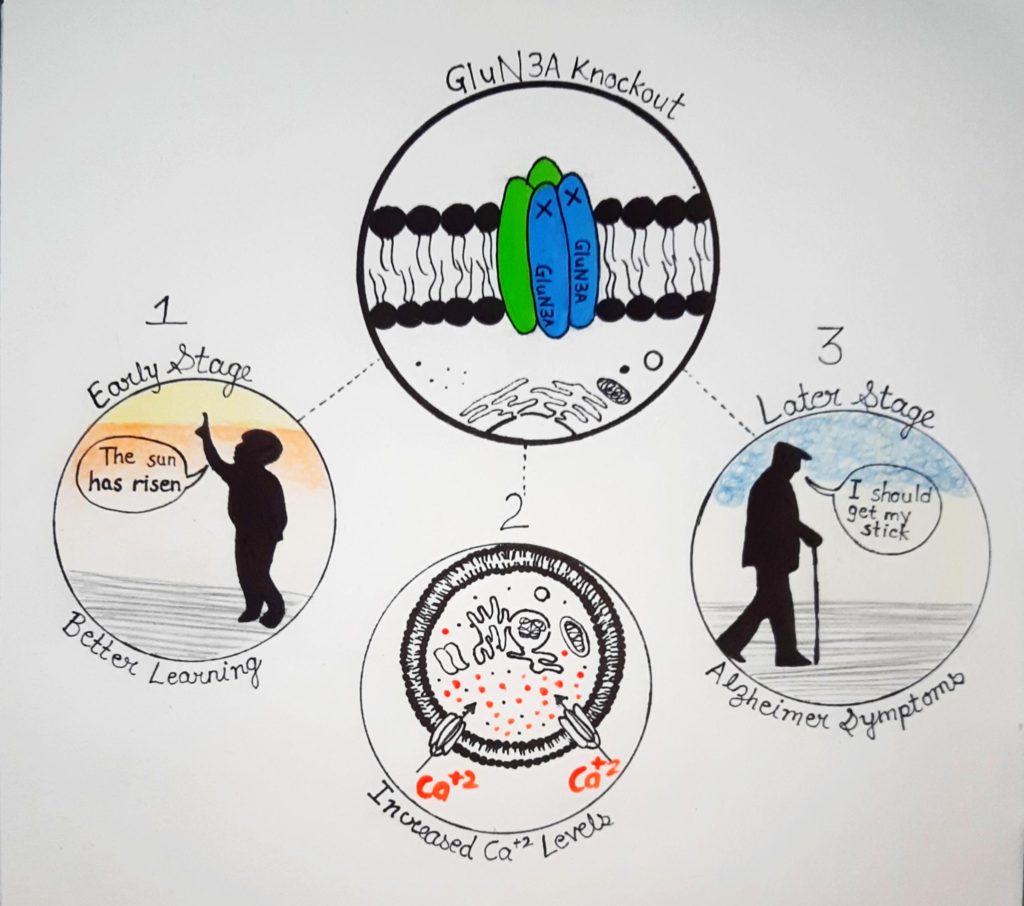In a recent turn of events, FDA approved the drug Aducanumab for treating Alzheimer’s. There has been a lot of debate in the scientific community since the drug’s approval. The drug reduces amyloid plaques caused because of the deposition of amyloid β. This accumulation has been speculated as a leading cause of Alzheimer’s. Many scientists believe this approval to be a landmark for Alzheimer’s treatment. Others argue that approving drugs that lower amyloid plaques can discourage research on other targets of Alzheimer’s. Indeed, most drugs focus on neurodegenerative models of Alzheimer’s based on tau or amyloid proteins.

Alzheimer’s is a neurodegenerative disorder. The neurons or cells of the central nervous system degenerate or die in such disorders. Several factors such as stroke, tumour or genetic factors can contribute to these diseases. Alzheimer’s is one of the most common forms of dementia. It manifests later in life, usually after a person turns 65 years old. It is a complex disorder in which the person becomes forgetful. He may not be able to remember events, times, and places. The disease affects around 5 million people in the US and worsens with time. Amyloid-based therapies are predominant in the development of drugs for Alzheimer’s. But, amyloid accumulates in the early stages of the disease. This occurs before the symptoms even appear. Thus, targeting amyloid for patients with mild or moderate forms of the disease may not be enough to stop it from progressing. There are many drugs based on the amyloid hypothesis in the manufacturing pipeline. But, many have yielded unsatisfactory results. It is necessary to understand the underlying biology of amyloid and non-amyloid-based models of the disease. For example, in the case of amyloid, one needs to ask whether it is the driver or the trigger of the disease pathology and at what concentration it becomes pathogenic?. The answers to these questions can help decide when we should intervene or if other pathways have to be targeted. Even though experimental evidence suggests the role of amyloid and tau in the pathology, the data from failed clinical trials are not encouraging. This highlights the need to explore other targets.
In the beginning, scientists focused on amyloid plaques as it was one of the most important hallmarks of Alzheimer’s. But, recent evidence suggests that amyloid plaques are one of the causative factors of the condition. A plethora of factors such as the tangles of tau protein, vascular health, immune function and many more may contribute to the disease. These become active over time. They lead to the death of neurons and a decline in cognitive functioning in the late onset of Alzheimer’s. It is difficult to incorporate so many variables. But, recent
research is working to identify other pathways of the condition. Scientists are now looking at alternative pathways of Alzheimer’s that can be targeted for treating the disease.
For example, a study published in the journal Alzheimer’s and Dementia details an alternative model of neurodegeneration associated with Alzheimer’s (2021). Shan Ping Yu and colleagues have been studying the NMDA receptor family and its unusual members for many years. NMDA receptors play an important role in memory and learning. Yu’s work focuses on NMDA’s receptor subunit, GluN3A. It is the inhibitory component of the receptor. Researchers showed that the pathophysiology of Alzheimer’s develops in the GluN3A knockout mice in an age-dependent manner. They found that the mice that lack this gene benefit in early life as they have improved learning. But, in the later stages, the absence of the GluN3A gene leads to the development of symptoms of Alzheimer’s. These include cognitive defects, olfactory deficits, neuroinflammation, neurodegeneration and tau or amyloid pathology at the end. They learned that the absence of GluN3A leads to an increase in calcium levels. These are tightly regulated under normal conditions. This is called “degenerative
excitotoxicity”. It can be linked to the well-proven calcium hypothesis for explaining Alzheimer’s. This hypothesis states that dysregulation of calcium levels leads to neurodegeneration.![]() The discovery of the role of GluN3A in the early stages of Alzheimer’s is refreshing. GluN3A’s loss leads to Alzheimer like symptoms even before the formation of amyloid plaques. This provides an opportunity to develop drugs in the context of GluN3A. Thus, shifting the focus from amyloid-based treatment strategies.
The discovery of the role of GluN3A in the early stages of Alzheimer’s is refreshing. GluN3A’s loss leads to Alzheimer like symptoms even before the formation of amyloid plaques. This provides an opportunity to develop drugs in the context of GluN3A. Thus, shifting the focus from amyloid-based treatment strategies.

Apart from this, research is also underway on ![]() Geroscience, anti-inflammatory and neurotrophic strategies for Alzheimer’s. Geroscience is the study of the relationship between the biological processes of ageing and the disease caused because of old age. Since ageing is a risk factor for Alzheimer’s, many researchers are working to find
Geroscience, anti-inflammatory and neurotrophic strategies for Alzheimer’s. Geroscience is the study of the relationship between the biological processes of ageing and the disease caused because of old age. Since ageing is a risk factor for Alzheimer’s, many researchers are working to find ![]() an association between it and neurodegeneration. Geroscience explores the role of physiological traits of ageing, such as mitochondrial dysfunction, high cellular senescence and decreased protein regulation in the pathology of Alzheimer’s. Neurotrophic strategies focus on neurotrophins that regulate the survival of neurons and their binding to cell receptors. These receptors regulate signalling receptors that have been correlated to neurodegeneration. Longo lab identified the p75 neurotrophin receptor as a target for Alzheimer’s treatment. Studies on the neuropathology of Alzheimer’s also revealed neuroinflammation. The Aβ acts as an antimicrobial peptide to prevent brain infection. But, the disruption of these antimicrobial pathways can act as a risk factor for Alzheimer’s and cause excessive neuroinflammation. These pathways can be used for developing therapeutics for Alzheimer’s.
an association between it and neurodegeneration. Geroscience explores the role of physiological traits of ageing, such as mitochondrial dysfunction, high cellular senescence and decreased protein regulation in the pathology of Alzheimer’s. Neurotrophic strategies focus on neurotrophins that regulate the survival of neurons and their binding to cell receptors. These receptors regulate signalling receptors that have been correlated to neurodegeneration. Longo lab identified the p75 neurotrophin receptor as a target for Alzheimer’s treatment. Studies on the neuropathology of Alzheimer’s also revealed neuroinflammation. The Aβ acts as an antimicrobial peptide to prevent brain infection. But, the disruption of these antimicrobial pathways can act as a risk factor for Alzheimer’s and cause excessive neuroinflammation. These pathways can be used for developing therapeutics for Alzheimer’s.
The barriers to alternative strategies for Alzheimer’s treatment involve the abundance of non-amyloid targets and the reluctance amongst scientists to share their clinical data with others. It is important to identify the crucial targets and tools necessary to study them. Researchers should also determine if the current models are enough to study the alternative targets and the drugs for them. An improved focus on developing new models for the disease is necessary. The different stakeholders from academia and industry must collaborate to work on innovative strategies that target the underlying cause of the disease. These should focus on counteracting the disease in the initial stages itself. We must bring such strategies to the forefront of fighting Alzheimer’s.
References:
1) Zhong, W., et al. (2021) Pathogenesis of sporadic Alzheimer’s disease by deficiency of NMDA receptor subunit GluN3A. Alzheimer’s & Dementia.![]() doi.org/10.1002/alz.12398
doi.org/10.1002/alz.12398
1) Zhong, W., et al. (2021) Pathogenesis of sporadic Alzheimer’s disease by deficiency of NMDA receptor subunit GluN3A. Alzheimer’s & Dementia.
2) Herrup, Karl et al. “Beyond amyloid: getting real about nonamyloid targets in Alzheimer’s disease,” Alzheimer’s
& dementia: the journal of the Alzheimer’s Association vol. 9,4 (2013): 452-458.e1. doi:10.1016/j.jalz.2013.01.017
3) Gauthier, Serge et al. “Non-Amyloid Approaches to Disease Modification for Alzheimer’s Disease. An EU/US
CTAD Task Force Report.” The journal of prevention of Alzheimer’s disease, 1-6. 6 Apr. 2020, doi:10.14283/jpad.2020.18
4) Nelson, C. An alternative model for the alternative hypothesis. Lab Anim47, 231 (2018).
. . .
Writer

Urvi Agrawal
Urvi is a biotechnology graduate. Her love for biology and writing motivated her to share interesting science stories. Currently, she is pursuing her interest in writing as a freelancer. In the future, she would like to make a career in scientific research and also continue to communicate science.
Illustrator

Shruti Morjaria
Shruti Morjaria is a self-learnt science artist and just another papercut survivor! She is completing her degree in cell and molecular biology. While she juggles between work and life, creativity keeps her sane. She says, “All you gotta do is be a passionate scribbler and see how creativity overflows!”

